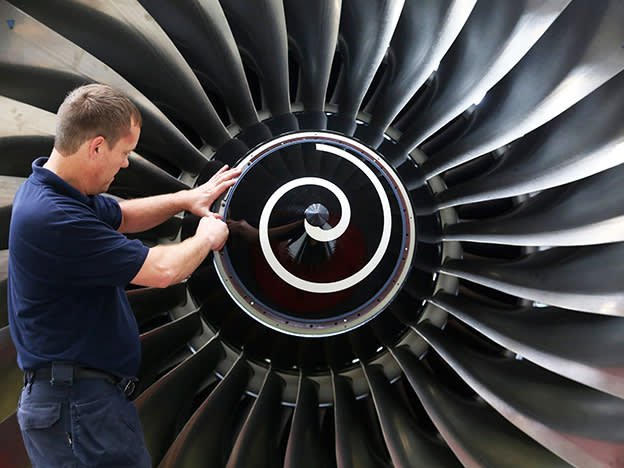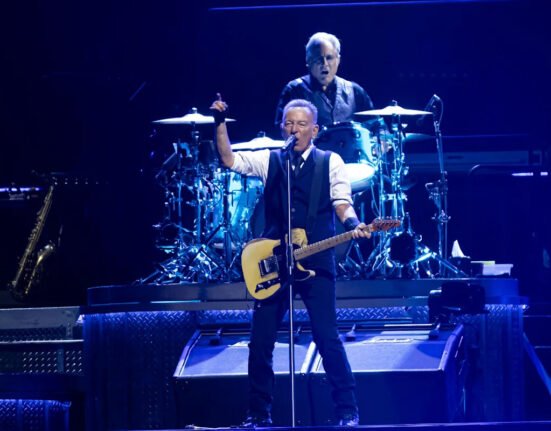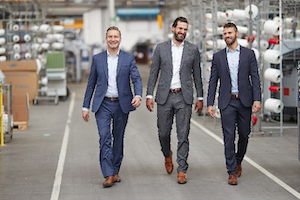- Watch how these ratios change after the full-year results
We’ve deliberated, cogitated and digested but, unlike Lloyd Grossman (presenter of the 1990s iteration of TV’s MasterChef), not concluded: analysing companies is more of a movable feast. Having dived into the drivers of Rolls-Royce’s (RR.) spectacular operational and share price performance, the ongoing task is staying abreast of them and watching for hints about its future direction.
One thing you learn watching the share prices of expensively valued US companies react to quarterly numbers is that it’s not just meeting headline profit expectations that matters. Some companies can beat earnings per share (EPS) estimates and still see their shares come off the boil because indicators such as the revenue growth of core business segments aren’t enough to keep analysts excited.
With its valuation of 30 times predicted 2024 earnings and 26 times the current forecasts for 2025, Rolls-Royce shares aren’t cheap either and investors must watch key data that will affect estimates of future EPS, free cash flow per share and earnings before interest, tax, depreciation and amortisation (Ebitda).
Deep Dive: Rolls-Royce
We looked at how Rolls-Royce has benefited from tailwinds in the form of the post-pandemic rebound of civil aviation and the pressing need for Nato countries to increase defence spending
Read more
The forecasts we care about adjust in response to how past expectations have been met, and clearly any positive or negative surprises are material. Keeping on top of the narratives around stocks, and how changes in predicted operating profits and margins play out are crucial to the investment case. Projections of trends can change, but these are essential components of building and justifying an investment case.
As a starting point, it will be interesting to see how the full-year 2024 operating profit and operating margin trends continue. More moderate earnings growth (the rebound in civil aviation after Covid-19 will subside) had been expected to show through by 2024, but any signs that the rate of growth in operating profits is proving more durable than expected will be immensely positive.
One of the strengths of Rolls-Royce in the past couple of years has been the way its aviation contracts – with revenue from after-sales maintenance rising as planes spend more time in the sky – have generated cash for the business. One plank of Rolls-Royce’s strategy is to reduce costs and de-intensify the working capital requirements of its aviation business, which helps cash margins, albeit its ability to continue pulling this off is one question that could be levelled at it. The doubt is whether more intensive working capital use must eventually be a consequence of the growth strategy. In other words, are today’s cash profit margins sustainable.
Trends in a couple of ratios that track financial risk management and cash profits are pertinent, along with activity ratios hinting at operational efficiency. There has been an improvement in cash conversion (Ebitda as a percentage of cash from operations) which has coincided with a shortened cycle between making sales and realising revenues. This is also underpinned by a more efficient use of fixed assets in generating revenues (evidenced by higher fixed asset turnover) and working capital efficiency rising against a backdrop of higher business activity.
The headline numbers in the results investors will want to keep an eye on will include how the average working capital (change period on period in current assets minus current liabilities) changes relative to revenues. This will indicate if growth in sales is happening efficiently – something that may be the case in aerospace if the business reaps benefits from its capital expenditure initiatives, which have a primary objective to improve the time engines spend flying, the “time on wing”, which increases the amount Rolls-Royce can bill its customers.
More robust contracts and better billing procedures, along with the overall recovery in civil aviation flight hours shows up in better revenues and operating profits, which importantly are converting to cash. The ratio of cash from operations to Ebitda trending back up towards 100 per cent is highly reassuring and how the full-year figure compares to the 95 per cent level predicted for 2024, is one to watch.
The long-term benefit of being a highly cash generative business is the reduction of net debt, both in absolute terms and as a multiple of cash profits. Trends in net borrowings (after subtracting cash) indicate the firepower Rolls-Royce has to pursue its growth strategy and its capacity to sustain a reinstated dividend. How many times Ebitda covers net debt is an important measure of solvency which has shown steady improvement.
Ultimately, this feeds through to free cash flow to the firm (FCFF), which is cash revenues minus operating expenses, working capital and fixed capital investments. Prior to the last two years of solid progress, this figure was negative and positive free cash flow to equity (FCFE) was based on proceeds from borrowings (FCFE is FCFF plus net money raised from debt finance). These historic figures make for stark viewing, and investors should remind themselves that a continued upward trend in FCFF (and therefore non-leverage dependent FCFE) is what will underpin the value of their holding and the prospects for its worth sustainably increasing at a rate that justifies the share price being paid today.








